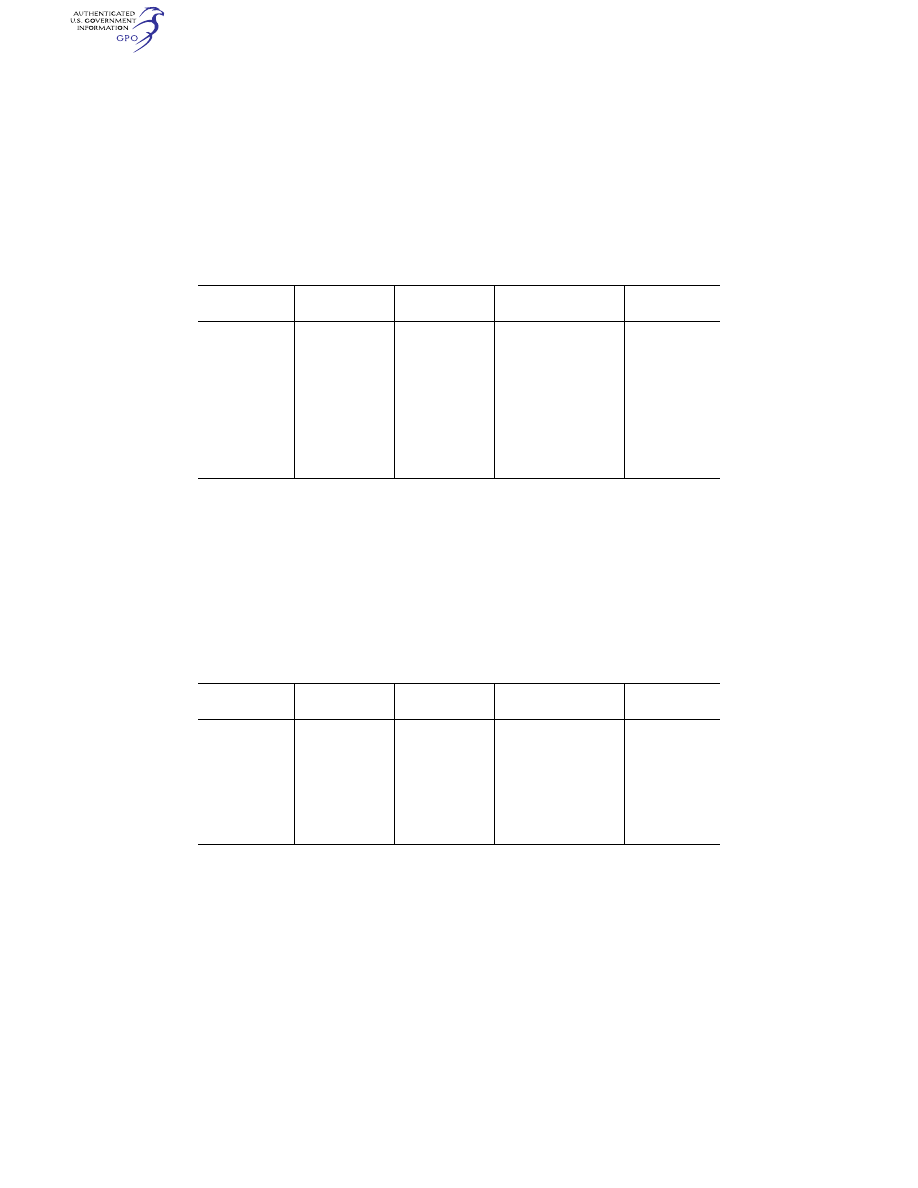
716
14 CFR Ch. I (1–1–24 Edition)
§ 33.69
T
ABLE
1—C
ONDITIONS
T
HAT
M
UST
B
E
D
EMONSTRATED BY AN
E
NGINE
T
EST
—Continued
Condition
Total air temperature
Supercooled water
concentrations
(minimum)
Median volume drop diameter
Duration
3. Glaze ice holding
conditions.
(Turbojet, turbofan,
and turboprop only).
Turbojet and Tur-
bofan, only: 10 to
18
°
F (
¥
12 to
¥
8
°
C).
Alternating cycle: First
1.7 g/m
3
(1 minute),
Then 0.3 g/m
3
(6
minute).
20 to 30 microns ...................
Must show repetitive,
stabilized operation
(or 45 minutes
max).
Turboprop, only: 2 to
10
°
F (
¥
17 to
¥
12
°
C).
.
4. Rime ice holding
conditions.
(Turbojet, turbofan,
and turboprop only).
Turbojet and Tur-
bofan, only:
¥
10 to
0
°
F (
¥
23 to
¥
18
°
C).
0.25 g/m
3
...................
20 to 30 microns ...................
Must show repetitive,
stabilized operation
(or 45 minutes
max).
Turboprop, only: 2 to
10
°
F (
¥
17 to
¥
12
°
C).
....................................
................................................
(d) Operate at ground idle speed for a
minimum of 30 minutes at each of the
following icing conditions shown in
Table 2 of this section with the avail-
able air bleed for icing protection at its
critical condition, without adverse ef-
fect, followed by acceleration to take-
off power or thrust. During the idle op-
eration, the engine may be run up peri-
odically to a moderate power or thrust
setting in a manner acceptable to the
Administrator. Analysis may be used
to show ambient temperatures below
the tested temperature are less crit-
ical. The applicant must document any
demonstrated run ups and minimum
ambient temperature capability in the
engine operating manual as mandatory
in icing conditions. The applicant must
demonstrate, with consideration of ex-
pected airport elevations, the fol-
lowing:
T
ABLE
2—D
EMONSTRATION
M
ETHODS FOR
S
PECIFIC
I
CING
C
ONDITIONS
Condition
Total air temperature
Supercooled water
concentrations
(minimum)
Mean effective particle di-
ameter
Demonstration
1. Rime ice condition
0 to 15
°
F (
¥
18 to
¥
9
°
C).
Liquid—0.3 g/m
3
........
15–25 microns .......................
By engine test.
2. Glaze ice condition
20 to 30
°
F (
¥
7 to
¥
1
°
C).
Liquid—0.3 g/m
3
........
15–25 microns .......................
By engine test.
3. Snow ice condition
26 to 32
°
F (
¥
3 to 0
°
C).
Ice—0.9 g/m
3
............
100 microns ...........................
(minimum) ..............................
By test, analysis or
combination of the
two.
4. Large drop glaze
ice condition (Tur-
bojet, turbofan, and
turboprop only).
15 to 30
°
F (-9 to -1
°
C).
Liquid—0.3 g/m
3
........
100 microns (minimum) .........
By test, analysis or
combination of the
two.
(e) Demonstrate by test, analysis, or
combination of the two, acceptable op-
eration for turbojet, turbofan, and tur-
boprop engines in mixed phase and ice
crystal icing conditions throughout
Appendix D of this part, icing envelope
throughout its flight power range, in-
cluding minimum descent idling
speeds.
[Amdt. 33–34, 79 FR 66536, Nov. 4, 2014]
§ 33.69
Ignitions system.
Each engine must be equipped with
an ignition system for starting the en-
gine on the ground and in flight. An
electric ignition system must have at
least two igniters and two separate sec-
ondary electric circuits, except that
only one igniter is required for fuel
burning augmentation systems.
[Amdt. 33–6, 39 FR 35466, Oct. 1, 1974]
VerDate Sep<11>2014
09:06 Jun 28, 2024
Jkt 262046
PO 00000
Frm 00726
Fmt 8010
Sfmt 8010
Y:\SGML\262046.XXX
262046
jspears on DSK121TN23PROD with CFR